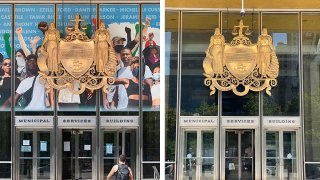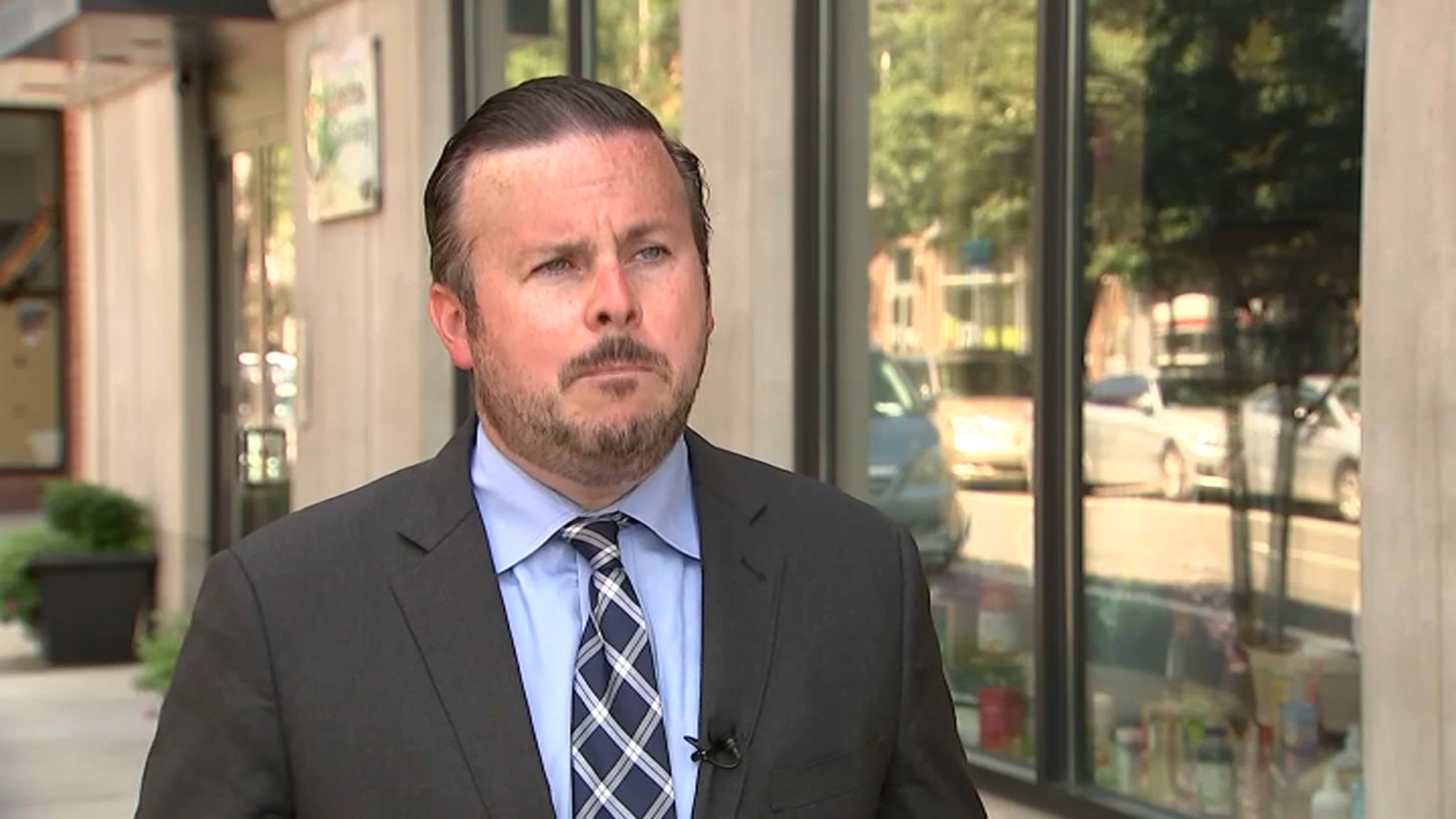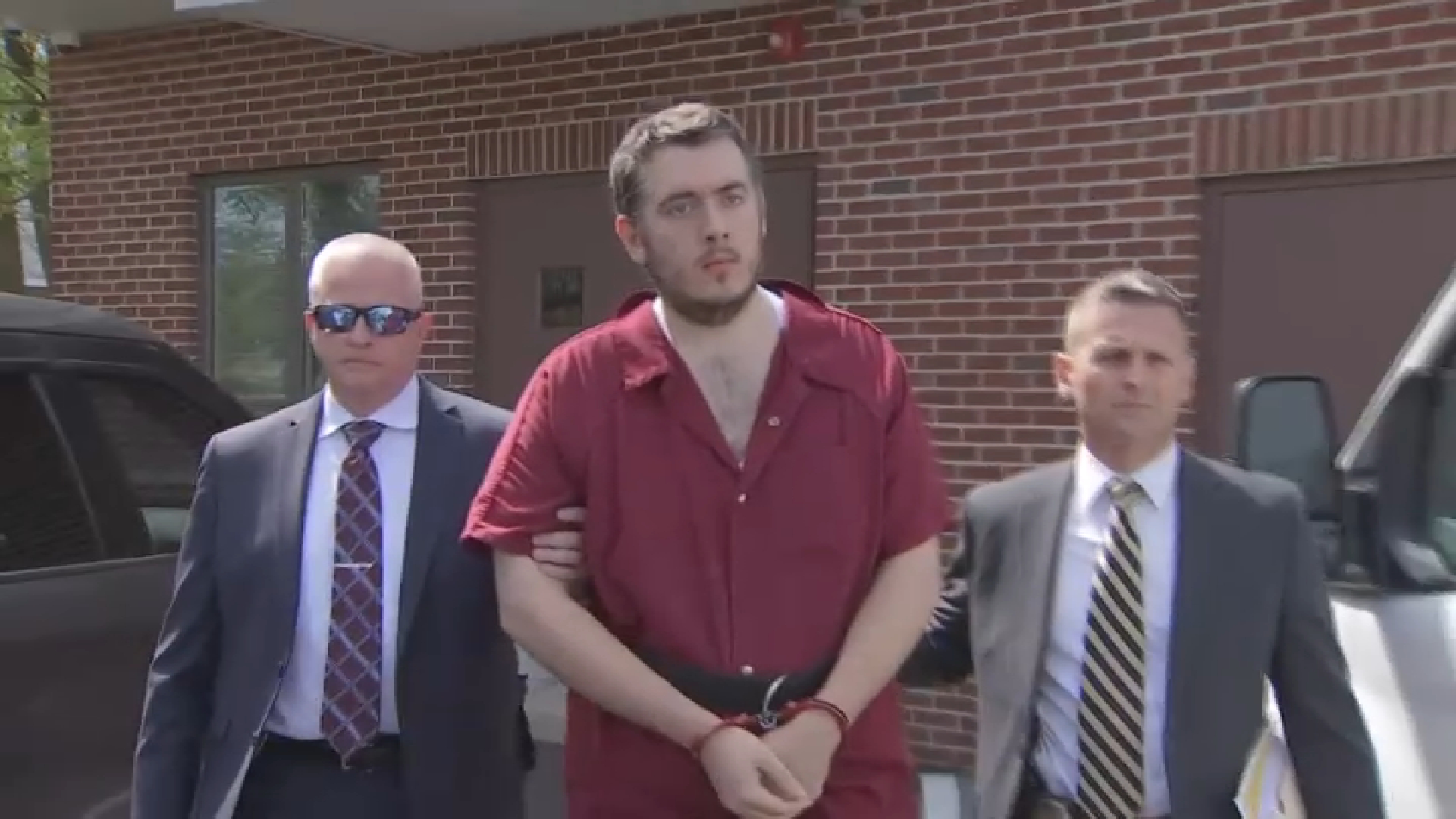
A mural that honored the Black Lives Matter movement has come down from one of Philadelphia’s most important buildings, but efforts are underway to find it a more permanent home.
The “Crown” mural by artist Russel Craig was only meant to stay up for a year, Mural Arts Philadelphia Executive Director Jane Golden said. It was recently taken down from the Municipal Services Building because the public property department asked that it be removed, since it had become damaged, she said.
The department was “very supportive” of the work, but the vinyl it was on had begun to fray, Golden said. “We made a promise to the city, to public property, that it would be removed after a year, and we took a full year,” she said.
The mural was unveiled in 2020. It came together as the city looked for avenues of reconciliation following widespread protests against police violence and racism that year, Mayor Jim Kenney said.
Get Philly local news, weather forecasts, sports and entertainment stories to your inbox. Sign up for NBC Philadelphia newsletters.
The mural featured a group of people, mostly Black, raising their fists in the air and coming together to form a crown.
The placement of the mural was intentional, given that the steps to the Municipal Services Building once featured a bronze statue of ex-mayor and police commissioner Frank Rizzo.
Rizzo has for decades divided opinion among Philadelphians. He became police commissioner in 1967 and also served two terms as mayor as a Democrat before switching to the Republican Party.
Local
Breaking news and the stories that matter to your neighborhood.
His four-year stint as commissioner was marked by both praise for crime-fighting and criticism for rights infringement. Though he is credited with hiring large numbers of African American officers and promoting several Black officers during his reign as commissioner, Rizzo’s tenure was also punctuated by some confrontations with African Americans.
The statue drew the ire of many in the city and frequently became the target of vandalism, including during the widespread protests following the murder of George Floyd, a Black man, who died suffocated under the knee of a white former Minneapolis police officer.
Kenney had gone on record calling the statue “a deplorable monument to racism, bigotry, and police brutality for members of the Black community, the LGBTQ community, and many others,” and said the protests caused the city to speed up its removal.
Joe Piette, a Philadelphia photographer and activist, said he was on a call phone call with other people when someone mentioned the “Crown” mural had been removed. Piette said he was present at the mural’s unveiling and was sad to see it go, especially because he knows some of the people who were depicted in the artwork.
“They took the Rizzo statue down and the mural sort of replaced Rizzo, and there was so much symbolism there,” Piette said.
“I share the sadness. I wish vinyl lasted longer,” Golden, the Mural Arts executive director, said. The good news, she said, is that Craig has agreed to paint the mural on a wall to make it a more permanent fixture in the city. The challenge now is finding the right wall.
Golden said anyone with suggestions about a good wall can email info@muralarts.org.
“It won’t be quite the same because the location where the Rizzo statue came down was so symbolic and so ‘in your face’ to the power structures of the city,” Piette said, “but if it could at least be put somewhere in a community that would appreciate it, it would be great.”



